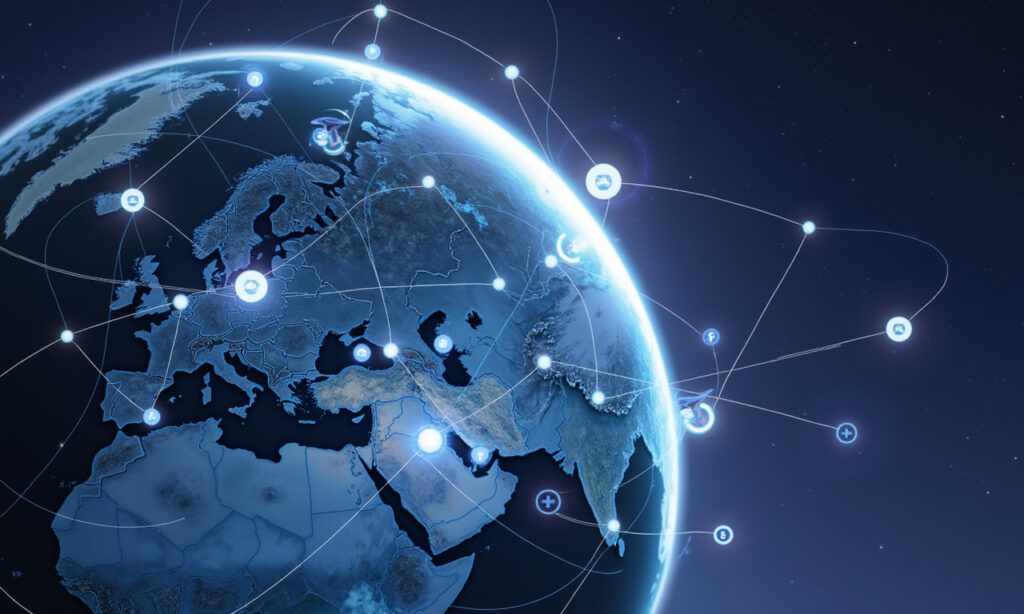In the era of digital transformation, networks are the unsung heroes that keep critical systems running and connect people and information seamlessly. However, despite their crucial role, network infrastructure often remains overlooked when it comes to sustainability. Here’s how cutting-edge technologies and strategic approaches are transforming network energy efficiency, making significant strides in reducing energy consumption and environmental impact.
The Power of AI in Network Energy Management
AI is revolutionizing the way networks consume energy. Solutions like Nokia’s AVA Energy Efficiency use AI models and machine learning to predict network traffic and dynamically adjust shutdown times, extending savings windows beyond what static schedules can achieve. This approach not only saves up to 30% in energy costs but also reduces CO2 emissions without compromising network performance[1].
For instance, AI-driven automation can adjust the azimuth and elevation angles of antennas to optimize energy use based on capacity and coverage requirements. Additionally, hard power saving controls ensure that unused equipment is fully shut down, further increasing energy savings by up to 50%. These advanced analytics also help in identifying anomalies in passive equipment, such as batteries or air conditioners, which could be draining energy unnecessarily.
Automation: The Key to Dynamic Energy Management
Automation is a game-changer in enhancing network energy efficiency. By integrating building automation management systems and smart sensors, organizations can create a highly efficient network infrastructure. Automated scripts can power down switch ports during non-business hours and reactivate them when needed, preventing unnecessary power draw.
Real-world examples, such as Ericsson’s solutions for Rogers Communications, demonstrate the efficacy of automation. Features like Micro Sleep Tx (MSTx), Low Energy Scheduler Solution (LESS), and MIMO Sleep Mode (MSM) automatically adjust power consumption based on traffic load, resulting in significant energy savings and reduced CO2 emissions[2].
Optimizing Power Consumption with Advanced Hardware and Software
The combination of innovative hardware and software is setting new benchmarks in network energy efficiency. Three UK, in collaboration with Ericsson, has achieved up to 70% energy efficiency at selected sites by deploying next-generation AI-powered hardware and software solutions. The use of energy-efficient radios, such as Ericsson’s dual-band Radio 4490, which consumes less power and is lighter than its predecessors, simplifies site access and accelerates upgrades[3].
These solutions enable components to deactivate when not in use and reactivate in microseconds when needed, optimizing energy consumption across 4G and 5G networks. Advanced machine learning and passive cooling features further enhance energy savings, making these networks not only smarter but also more sustainable.
Transitioning to Direct DC Power and Renewable Energy
One of the significant inefficiencies in network power consumption stems from the conversion of AC to DC power. Transitioning to direct DC power sources can eliminate these inefficiencies, reducing overall power loss and improving energy efficiency.
Emerging power solutions, including the integration of renewable energy sources like solar panels, are becoming increasingly viable. These off-grid solutions can power on-premise data banks, reducing reliance on traditional power grids and lowering the environmental footprint. By optimizing power delivery and embracing renewable energy, organizations can build a more sustainable and energy-efficient networking infrastructure.
A Strategic Shift Toward Sustainable Networking
As technology continues to evolve, networking solutions are increasingly integrating sustainability features. The key for IT leaders is to start small, make incremental changes, and continuously explore new technologies that drive both sustainability and operational efficiency.
By adopting AI-driven energy management, automation, and advanced hardware and software solutions, organizations can significantly reduce their energy consumption and environmental impact. This strategic shift toward sustainable networking not only supports global sustainability goals but also lowers operational costs and enhances the overall efficiency of the network infrastructure.
In conclusion, driving energy efficiency through the network is no longer a secondary consideration but a imperative for sustainable IT practices. With the right technologies and strategies in place, organizations can build greener, more efficient networks that support both business goals and environmental sustainability.
